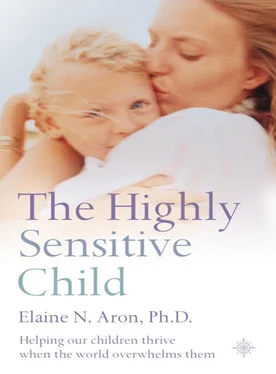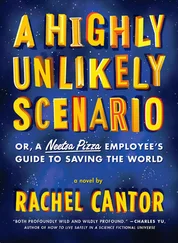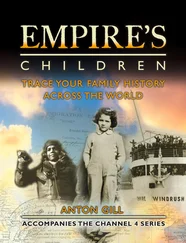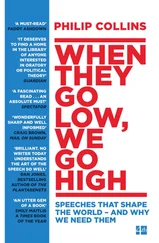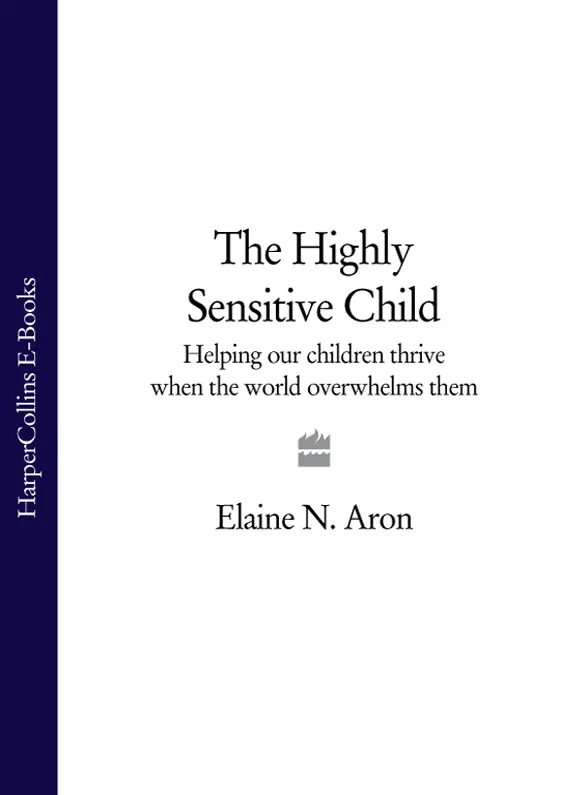
the highly sensitive child
Helping Our Children Thrive
When the World
Overwhelms Them

Thorsons
An Imprint of HarperCollins Publishers 1 London Bridge Street London SE1 9GF
The website address is: www.thorsonselement.com
 and Thorsons are trademarks of HarperCollins Publishers Ltd
and Thorsons are trademarks of HarperCollins Publishers Ltd
First published in the USA in 2002 by Broadway Books,
a division of Random House, Inc.
This edition published in 2003 by Thorsons
© 2002 Elaine N. Aron
Elaine N. Aron asserts the moral right to be
identified as the author of this work
A catalogue record of this book is available
from the British Library
All rights reserved under International and Pan-American Copyright Conventions. By payment of the required fees, you have been granted the nonexclusive, nontransferable right to access and read the text of this ebook on-screen. No part of this text may be reproduced, transmitted, downloaded, decompiled, reverse engineered, or stored in or introduced into any information storage and retrieval system, in any form or by any means, whether electronic or mechanical, now known or hereinafter invented, without the express written permission of HarperCollins ebooks
HarperCollinsPublishers has made every reasonable effort to ensure that any picture content and written content in this ebook has been included or removed in accordance with the contractual and technological constraints in operation at the time of publication.
Source ISBN: 9780007163939
Ebook Edition © JUNE 2012 ISBN 9780007382897
Version: 2018-11-19
To sensitive children everywhere,
and to those who gently raise them so that they grow up
to be secure in a difficult world
Cover
Title Page
Copyright
Dedication
Introduction
Is Your Child Highly Sensitive: A Parent’s Questionnaire
PART I: AN OVERVIEW OF THE SENSITIVE CHILD
| Chapter 1. |
Sensitivity: A Better Light on “Shy” and “Fussy” Children |
| Chapter 2. |
Fasten Your Seat Belts: The Challenges of Raising an Exceptional Child |
| Chapter 3. |
When You the Parent Are Not Highly Sensitive: Blessings in Disguise |
| Chapter 4. |
When You and Your Child Are Both Highly Sensitive: And What About the Rest of Your Family’s Temperament? |
| Chapter 5. |
Four Keys to Raising a Joyous HSC: Self-esteem, Shame Reduction, Wise Discipline, and Knowing How to Discuss Sensitivity |
PART II: FROM INFANCY TO YOUNG ADULTHOOD
| Chapter 6. |
Off to the Right Start: Soothing and Attuning to Highly Sensitive Infants |
| Chapter 7. |
Toddlers and Preschoolers at Home: Adapting to Change and Dealing with Overstimulation |
| Chapter 8. |
Toddlers and Preschoolers Out in the World: Helping Them Feel Successful in New Situations |
| Chapter 9. |
School-Age HSCs at Home: Resolving Problems |
| Chapter 10. |
School-Age HSCs Out in the World: Helping Your Child Enjoy the Classroom and Social Life |
| Chapter 11. |
Sensitive Adolescents and Young Adults: The Delicate Task of Launching a Spirited, Seaworthy Vessel |
Twenty Tips for Teachers
Resources
Notes
Acknowledgments
About the Publisher
If you are reading these words, there is something about your child that makes you think he or she is highly sensitive. To best understand what that means, read over the checklist on pages xvii–xviii. If many of these statements apply to your child, read on … and welcome.
Almost everyone knows that even at birth children have their own personalities. “She always knew what she wanted, even as a baby, and she was going to have it or else.” “He was always good-natured. Feed him or not, change him or not—it hardly mattered.” Like every other child, yours has inherited her own unique combination of innate temperament traits. Yet each trait taken by itself is probably not unique, but is typical of a group of children, and so it can be easily described. “Strong-willed.” “Good-natured.” And so forth.
One such common inherited trait is high sensitivity, found in about 15 to 20 percent of children (the percentage is the same in boys and girls). Some infants seem fairly oblivious to whatever you feed them and whatever the temperature of the room may be; it does not matter to them if the stereo is on loud or the lights are bright. But highly sensitive infants seem to notice every slightly new taste, every change in temperature; they startle at loud noises and cry when a bright light is in their eyes. When they are older, they are often emotionally sensitive, too. They cry easily when their feelings are hurt, they worry more, and they can be so happy they “can’t bear it.” They also reflect before they act, so that they often come across as shy or afraid when they are merely observing. When they grow older still, they are often remarkable for their kindness and conscientiousness; they are upset by injustice, cruelty, or irresponsibility.
Even though it is possible to say a great deal about highly sensitive children (HSCs), no description will fit every child perfectly because, again, each HSC is unique, thanks to a unique combination of inherited traits plus different upbringings and school experiences. Your HSC may be outgoing or prefer to play alone, persistent or easily distracted, bossy and demanding or so adaptable he’s “almost too good.” But there is still a common thread of sensitivity you can recognize.
Now might be the time to tell you a little more about my study of high sensitivity in adults and how I came to extend my work to children and child-rearing. I am a research psychologist as well as a licensed clinical psychologist; I am also a highly sensitive person and the parent of one. As I describe in Chapter 1, I began researching high sensitivity as a trait about twelve years ago, and so far I have interviewed or consulted with hundreds, maybe thousands, of sensitive adults, parents, and children. I have gathered questionnaire data from thousands of others. This research has also been published in the leading journals in my field. The information you will find in this book is based on solid evidence. In fact, it has been studied for fifty years in infants and children but described in other terms, such as low sensory threshold, innate shyness, introversion, fearfulness, inhibitedness, negativity, or timidity. So one could say that the basic reason for this book is that the trait needed renaming, especially when the old terms are applied to children. And in renaming it, we gain not only a more accurate description but new ways to think about our sensitive children.
Читать дальше
